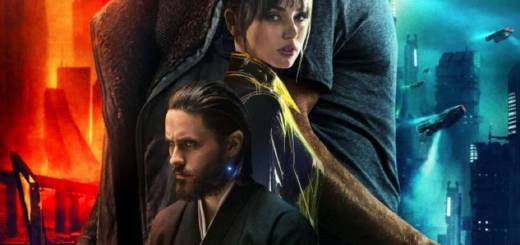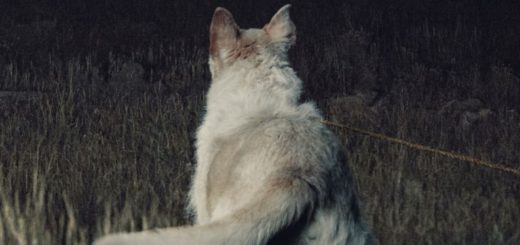OUIJA: ORIGIN OF EVIL Review
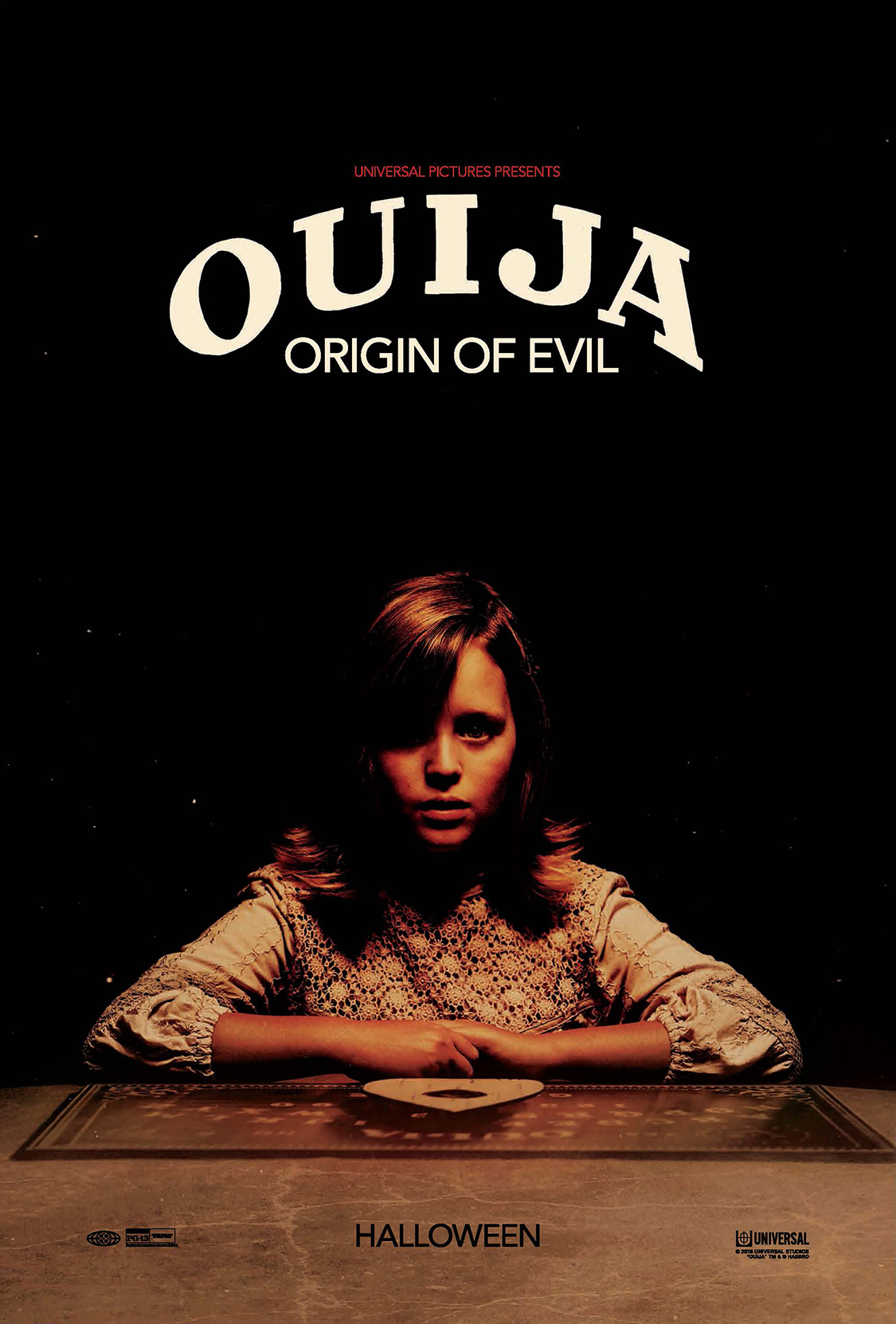
Director: Mike Flanagan
Genre: Horror
Year: 2016
We here at Crossfader have been taking potshots at the impending release of OUIJA 2 for quite some time now. The original OUIJA is easily among the weaker entries in the extensive Blumhouse Productions catalog, perhaps only beating out MOCKINGBIRD, THE TOWN THAT DREADED SUNDOWN, and THE DARKNESS. The film is filled with predictable, watered-down scares, horrific #teen dialogue, and a general atmosphere of a quick, cash-grab filler. While it should have never in a million years been considered for franchise potential, this is Blumhouse after all, which means that nothing is sacred. Well, I would hereby like to take the opportunity to invite Jason Blum to tell me to kiss his spurs, because OUIJA: ORIGIN OF EVIL is a genuinely creepy and dramatically sound horror film, one of the strongest PG-13 frightfests since THE CONJURING and its sequel, and in easy competition for the cream of the Blumhouse crop.
Set nearly 50 years before the first film, OUIJA: ORIGIN OF EVIL deals with Lina (Annalise Basso), Doris (Lulu Wilson), and Alice (Elizabeth Reaser) Zander. Alice is a medium scraping by in a Los Angeles suburb, utilizing the help of her daughters to trick her clients into believing that they’re having genuine supernatural experiences. However, since her clients almost exclusively want to use her services to find closure with their dead loved ones, Alice is able to sleep at night knowing that she’s still offering them a valuable service. When the teenaged Lina plays with a ouija board at a party, she suggests that Alice incorporate it into her act. Alice tests it out, but manages to actually contact a malicious entity, which begins to possess the young Doris. Initially believed to be the spirit of the girls’ deceased father, it soon becomes clear that the spirit has much more insidious plans in mind.
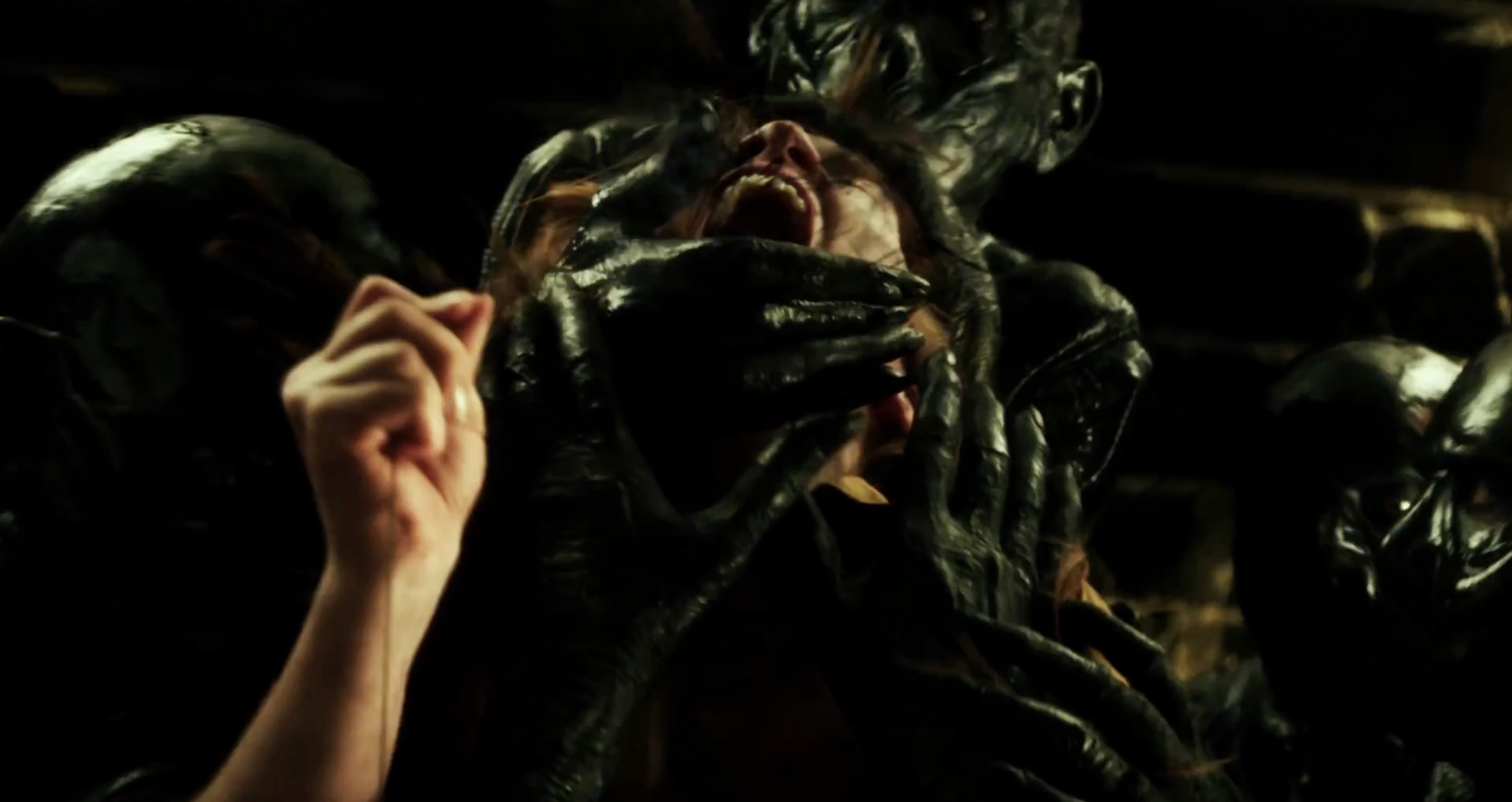
I think I’ve been in this mosh pit before
When I learned that Mike Flanagan was attached to direct OUIJA: ORIGIN OF EVIL, my hopes immediately perked up, as HUSH was ultimately an enjoyable thriller, and the oft-forgotten OCULUS is a surprisingly competent Blumhouse deep cut. Thankfully, I was not to be disappointed, as Flanagan injects more maturity and composure into the film than Stiles White could have ever hoped to with the original. What’s immediately apparent is the camerawork, which takes a more pensive, languorous route that hearkens back to the classic horror films of the ʼ70s. However, what I find most notable is Flanagan’s commendable use of the entire frame. While characters looking through the planchette of the ouija board lent itself to predictable jump scares in the original, here, Flanagan almost exclusively places the spooks at the edge, leading to several tense moments where we see dark shapes hurriedly scurry off screen, waiting with bated breath for them to scream back into our field of vision. In addition, there are a handful of scenes where we see characters (typically Doris) puttering around in the background while other characters talk in the foreground; this incorporation of depth of field into a horror frame is notably absent in most genre fare. Last but not least, by far the most disturbing visual of the entire film occurs in the background of a frame, as a horrifying Doris face morph happens while Lina’s boyfriend Mikey (Parker Mack) occupies most of our attention.
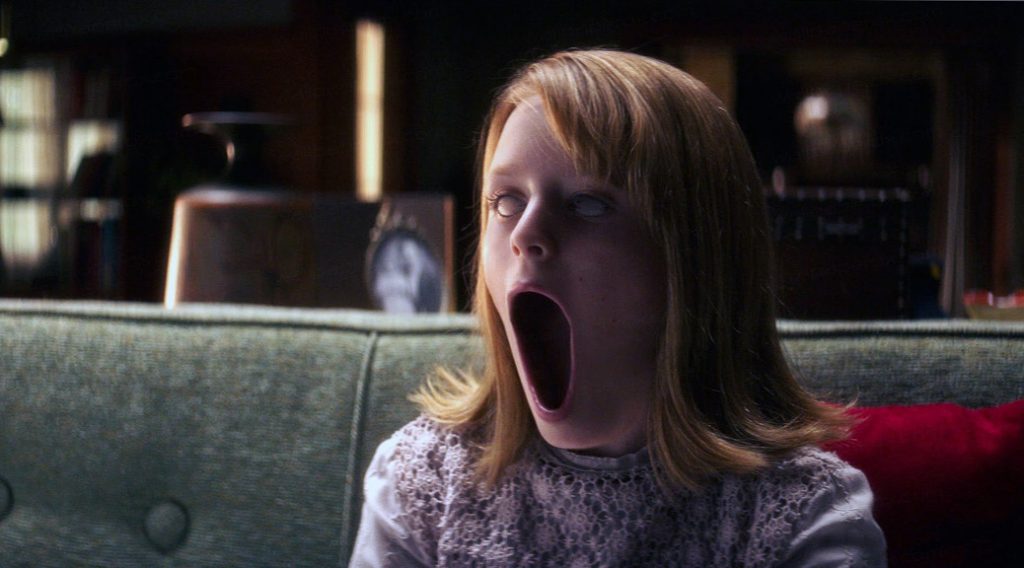
Boys…
The maturity of composition extends itself into the editing room, with a somewhat innovative technique of showing us what the demonically possessed Doris is up to when nobody’s looking. I know this is seemingly minor, but think about it: Apart from when they’re murdering, when do we ever see a horror antagonist just lounging around the house? With several unexpected cuts to Doris “watching TV” with eyes rolled back and jaw unhinged to snake-like proportions, it’s a subtle but layered addition to showing how Doris’s life has become a living Hell. And speaking of layers, OUIJA: ORIGIN OF EVIL is the rare horror film where the audience will actually end up caring about the characters. By establishing early on how each of the Zander ladies are processing the death of Roger in their own quietly sad way, heartstrings will be tugged as Alice and Doris desperately want to believe that he’s returned and is in direct communication with the family. It’s a notably developed incorporation of internal conflict into outward horror aesthetics, and as THE BABADOOK and IT FOLLOWS show, this typically leads to stellar genre presence.
That being said, the film can’t help but have a few missteps. First and foremost, the film shows it’s comparatively family-friendly rating with its impotent portrayal of the demon in question. Appearing more like a Heartless from KINGDOM HEARTS than any sort of malevolent entity, I was disappointed that Flanagan saw fit to give a face to what had been a mysteriously ominous spirit. However, what many more will point to as a chink in the armor is the demon’s backstory: ostensibly one of the most dedicated Nazis to ever “sieg hiel,” a mad scientist escaped the Third Reich with his reputation entirely unscathed, only to make his way to America and continue to malpractice upon American Jews. While this is certainly evil, almost to a cartoon-like degree, it makes a grand total of zero logical sense, and feels like a plot point of a much more forgettable film. Not helped by the fact that it’s delivered in a lengthy third act scene consisting entirely of exposition, this is one of the few glaring errors that Flanagan signed off on.
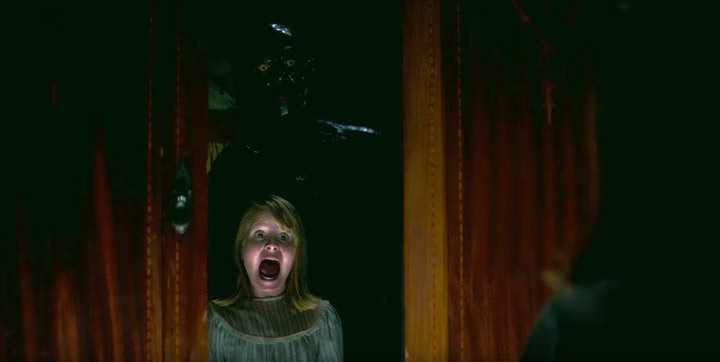
MAYNARD AND ZED FINALLY LET THE GIMP OUT!!!
In addition, and this is really more the production company’s fault than anything related to Flanagan, but the film will forever be unfairly tied to its flaccid predecessor. Had this had a different name attached, many more people would have paid attention, but despite the fact that OUIJA: ORIGIN OF EVIL values atmosphere over cheap thrills, features entirely sympathetic characters, and relies on surprising ways to get under our skin, it will forever be “the prequel to OUIJA.” In addition, its status as a prequel necessitates a standard and schlocky “surprise” ending that I won’t ruin here, but was necessary only to work in the world of the story. Oddly enough, while I certainly don’t care about the original enough to be genuinely upset, Flanagan’s picture can’t manage to get the mythos entirely straight, as the first film paints Doris as a generically evil being without any mention of the larger spirit possessing her. A minor complaint, but one that proves that Blumhouse could care less about its 2014 filler.
OUIJA: ORIGIN OF EVIL is perhaps the definition of a pleasant surprise. While young adults on date night may find a little disappointment in its occasionally slow pacing (especially in the first act), on a larger level, this pays dividends in terms of the larger character drama at play. With several references and homages to classic possession films, most importantly of all, this film proves that Flanagan has yet to do any wrong. Blumhouse could certainly do worse in terms of cultivating an in-house director, and if he continues on this trajectory, maybe he can even breathe life into future installments of SINISTER or INSIDIOUS.
Verdict: Recommend

